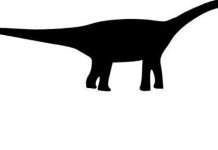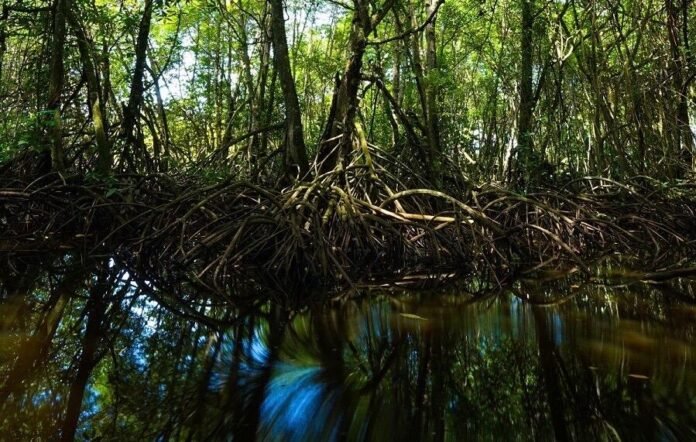Thiomargarita magnifica, the biggest bacteria have evolved to acquire complexity, becoming of eukaryotic cells. This seems to challenge the traditional idea of a prokaryote.
It was in 2009 when scientists had a strange encounter with microbial diversity that exists in the nature. While looking for sulfur-oxidising symbionts in sulfur-rich mangrove sediments in Guandeloupe , an island group in the southern Caribbean Sea, the research team came across some white filaments attached to sediments. They were big with lot of filaments so the researcher initially thought them to be a eukaryote, some unknown filamentous fungi. However, microscopy studies indicated they were single cells, some sulfar-oxidising, ‘macro’ microbes. If they were fungi then phylogenetic typing should reveal 18S rRNA gene sequence (a marker for eukaryote). However, gene sequencing revealed presence of prokaryote marker 16S rRNA implying the sample was a bacterium, a member of the genus Thiomargarita. It was named Thiomargarita magnifica (magnifica because it looked magnificent).
This is how the bacteria T. magnifica was discovered way back in 2009 but the detailed cellular structure and the related information were unavailable until very recently when a paper titled ‘’A centimeter-long bacterium with DNA contained in metabolically active, membrane-bound organelles’’ by Volland et al was published-on 23 June 2022 (the preprint version was posted on 22 February 2022).
According to this study, Thiomargarita magnifica is a centimeter-long, single bacterial cell. unlike most of bacteria whose length is about 2 micrometers (some bacteria may be as long as 750 micrometers), average cell length of Thiomargarita magnifica is greater than 9000 micrometers. This makes them the biggest bacterium known. Obviously, it is clearly visible to the naked eye. Cell size of this order is highly uncharacteristic of prokaryotes.
Further, T. magnifica DNA is contained in a novel type of membrane-bound bacterial cell organelle. This is significant because the packing of DNA inside a membrane-bound compartment in the cell is considered to be important feature of eukaryotes. The authors have proposed the name pepin for this bacterial cell organelle containing genetic material. Also, T. magnifica display high level of polyploidy with a large genome. Usually, prokaryotes have no internal membrane-bound organelles within the cell and they have small amount of genetic material. They also do not display dimorphic developmental cycle which T. magnifica does.
Prokaryotes (bacteria and the archaea) usually are small, single-celled organisms. They lack well defined nucleus and other organelles in the cells. They have relatively simple structure. As evident from the above-mentioned reported features, T. magnifica seems to have evolved to acquire high level of complexity becoming of a eukaryotic cell. This seems to challenge the traditional idea of prokaryote.
***
References:
- Volland JM, et al 2022. A centimeter-long bacterium with DNA contained in metabolically active, membrane-bound organelles. SCIENCE. Published on 23 June 2022. Vol 376, Issue 6600 pp. 1453-1458. DOI: https://doi.org/10.1126/science.abb3634 (Preprint at bioRxiv. A centimeter-long bacterium with DNA compartmentalized in membrane-bound organelles. Posted February 18, 2022. DOI: https://doi.org/10.1101/2022.02.16.480423)
- Berkeley Lab 2022. Giant Bacteria Found in Guadeloupe Mangroves Challenge Traditional Concepts. News Release Media Relations (510) 486-5183. June 23, 2022. Available online at https://newscenter.lbl.gov/2022/06/23/giant-bacteria-found-in-guadeloupe-mangroves-challenge-traditional-concepts/
***
(Acknowledgement: Prof K. Vasdev for the valuable input on phylogenetic characterisation of bacteria)




































